Chinese soldiers’ spirit to fight against US aggression during Korean War commemorated
By Li Qiao in Dandong Source: Global Times Published: 2020/10/19 20:16:37
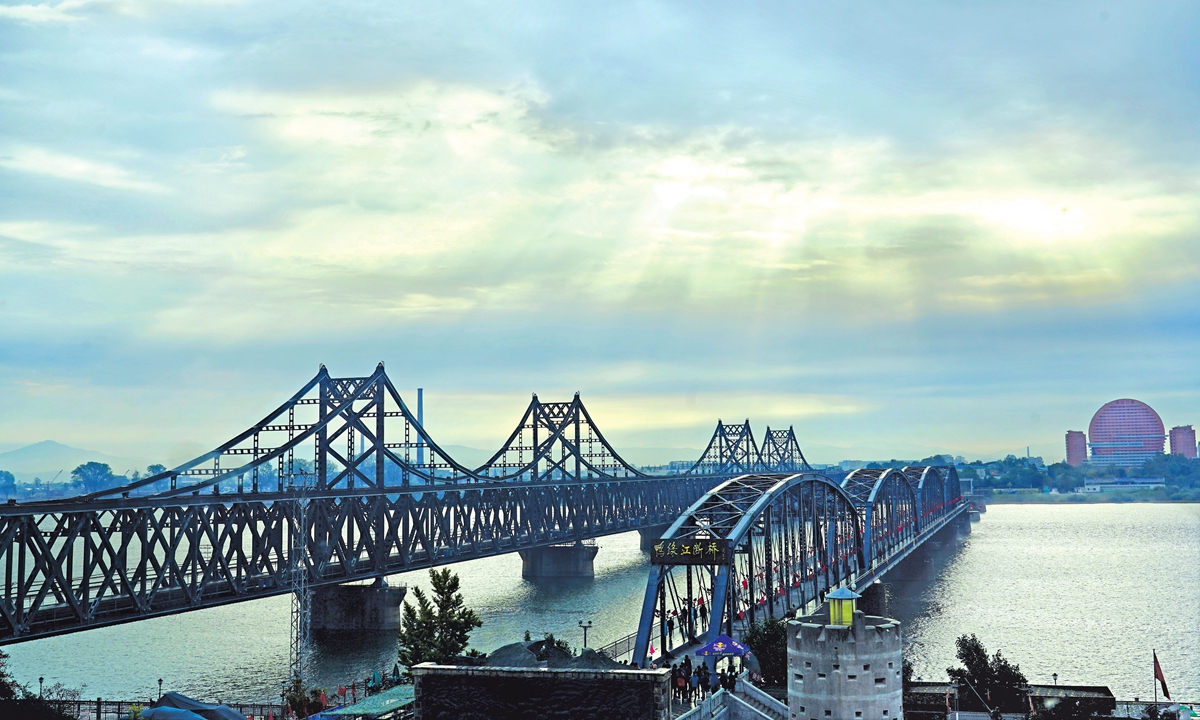
The Yalu River Broken Bridge is the landmark of Dandong, Northeast China's Liaoning Province. The bridge served as a major artery for China's aid to North Korea during the Korean War. American forces repeatedly bombed the bridge to cut off Chinese supply lines. Photos: Lin Luwen/GT
Three Chinese women in their sixties, marching like soldiers and singing the anthem of the Chinese People's Volunteers (CPV) Army, walked on a broken bridge over the Yalu River that divides North Korea and China, in Dandong, Northeast China's Liaoning Province, on Saturday. They were commemorating the scene when CPV walked across the Yalu River to join the War to Resist US Aggression and Aid Korea(1950-53).Exactly 70 years ago, the Chinese People's Volunteers (CPV) Army walked across the Yalu River to North Korea from border city Dandong, also the stronghold to transport war reserves to front line. From then on, Dandong is honored as a hero city in China.
This year marks the 70th anniversary of CPV participation in the Korean War (1950-53). Chinese people have not forgotten the sacrifice of the CPV and many visit Dandong to commemorate the spirit of the war to resist US aggression.
Commemorating the spirit
Dandong has a memorial hall, 19 mausoleums for the martyrs and many historical sites of the war, showing people the real history and sacrifices made by CPV soldiers who fought alongside North Korean troops against US aggression under difficult conditions.
The Memorial Hall of the War to Resist US Aggression and Aid Korea in Dandong reopened after renovation on September 19. First established in 1958 and moved to its current site in 1993, the memorial hall closed in late 2014 and has undergone massive refurbishment and expansion. It is the only museum in China featuring an exhibition on the complete history of CPV participation in the war.
With many people expecting to visit the new hall, some visitors didn't manage to make a reservation a week in advance.
Wang Chuanxin, a 67-year-old visitor, who has difficulty communicating due to suffering from sequelae of cerebral hemorrhage, was wheeled around the memorial hall by his wife Wang Guirong. Wang Chuanxin's uncle participated in the CPV 70 years ago and lost contact with the family in the Korean War. He was eager to visit this new hall after hearing the news of its reopening, as if he could see his uncle, despite never knowing what he looked liked.
Wang's son checked the reservation website and finally booked tickets successfully for his father nearly one month later on October 15.
"Today is rainy which is inconvenient and dangerous for wheeling my husband out. However, he can't wait to come and insists visiting this hall today," Wang Guirong told the Global Times.
"This hall showed us and the young generation a comprehensive and vivid glimpse of the war," she said.
Observing the mock CPV model in the hall, Wang Guirong said she realized that their uncle was in fact such an unnamed hero. She wishes more people come to learn how they resisted US aggression and aided Korea, sacrificing in the war to protect the motherland.
"My husband is very excited to watch the war scene. Even though he cannot express it well, I can tell from his face," Wang Guirong said.
Many people come to the Dandong Cemetery of the War to Resist US Aggression and Aid Korea Martyrs, the earliest CPV soldiers' cemetery built in China. Among 197,653 martyrs confirmed by China's Civil Affair Ministry, there are 292 CPV martyrs buried in this 14,000-square-meters cemetery.
Sun Dali, the director of the mausoleum, told the Global Times that every year on Qingming Festival, Army Day and other anniversaries, the relatives of the martyrs and visitors would send flowers and clean tombstones to commemorate the martyrs.
For this year's Qingming Festival in April, travel was limited due to anti-epidemic measures. The cemetery conducted an online memorial service. Martyrs' family members booked flowers online and watched martyrs' tombstones through video chats with cemetery staff.
The COVID-19 pandemic might stop people from visiting the cemetery but can't impede people from commemorating the spirit of the Chinese soldiers in fighting the war, Sun noted.
The broken bridge was originally the first iron bridge over the Yalu River, built by Japanese invaders in 1909 to plunder China's wealth. The bridge was 944.2 meters long and 11 meters wide, connecting Dandong and North Korean city Sinuiju.
The bridge served as major artery for China's aid to North Korea during the Korean war. American forces repeatedly bombed the bridge to cut off Chinese supply lines. On November 8, 1950, the bridge was blown off. The remaining part of the bridge in China is still there today, later known as the "Yalu River Broken Bridge."
Li Di, a 32-year-old man, drove four hours from Dalian to Dandong on Saturday, stepped onto the broken bridge to learn the history of the Korean War and show respect to CPV soldiers.
"Seeing the remaining bridge piers, I couldn't wonder how cruel the battlefield was. CPV heroes devoted themselves 70 years ago and we gain the current promising life of our generation. It is important to inherit and carry forward their spirit, and it is time for our generation to defend our country!" he told the Global Times.
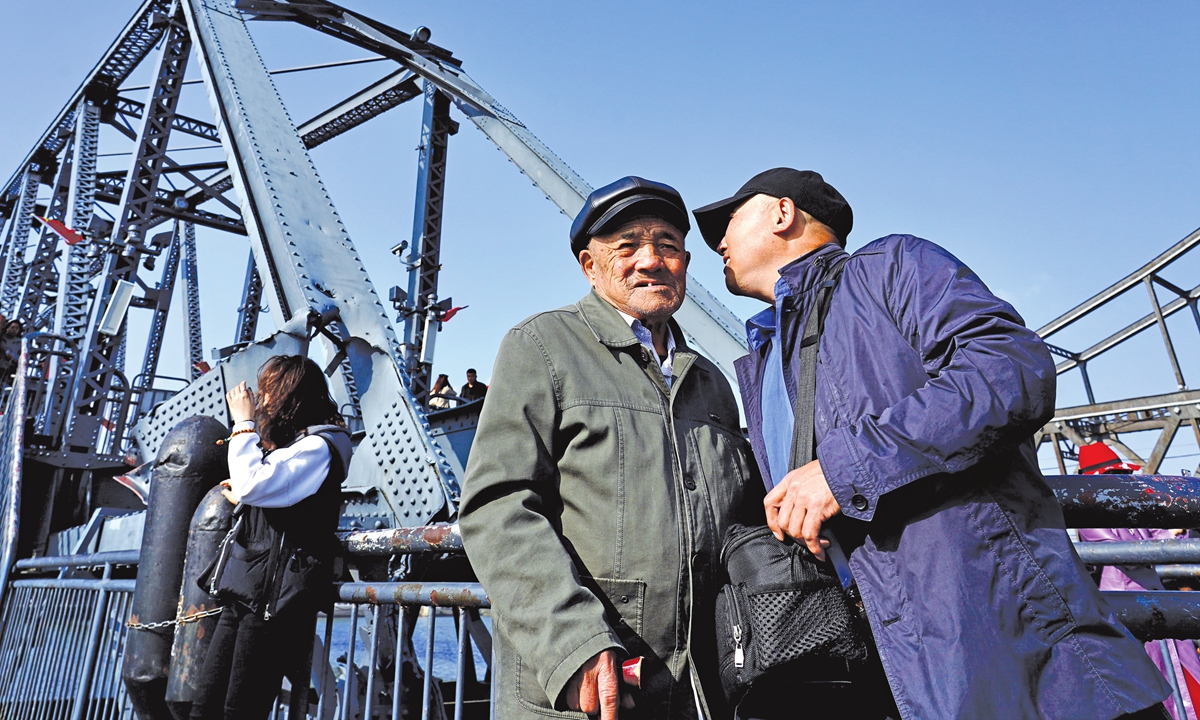
Zhang Fasong (center), 90, visits the Yalu River Broken Bridge accompanied by his son from Daqing, Northeast China's Heilongjiang Province.
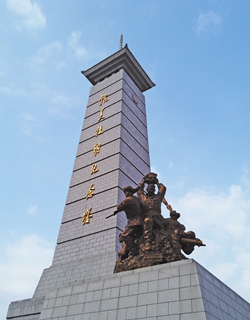
The Monument of War to Resist US Aggression and Aid Korea in Dandong
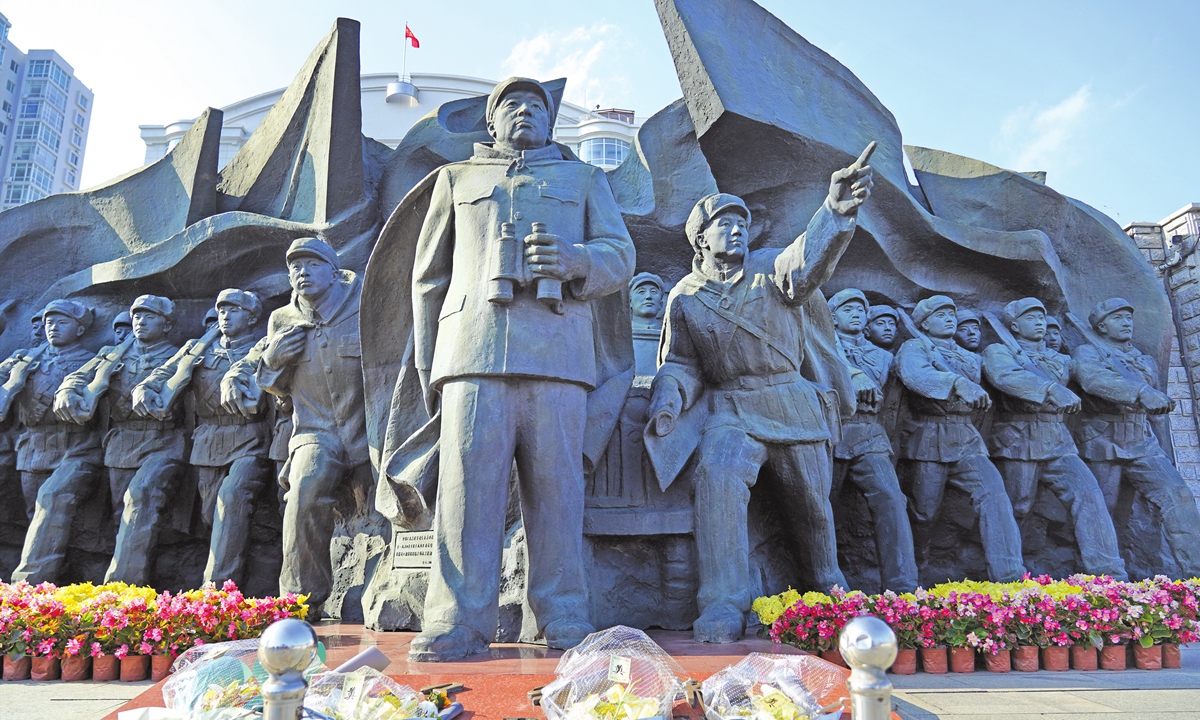
A sculpture of the War to Resist US Aggression and Aid Korea in Dandong
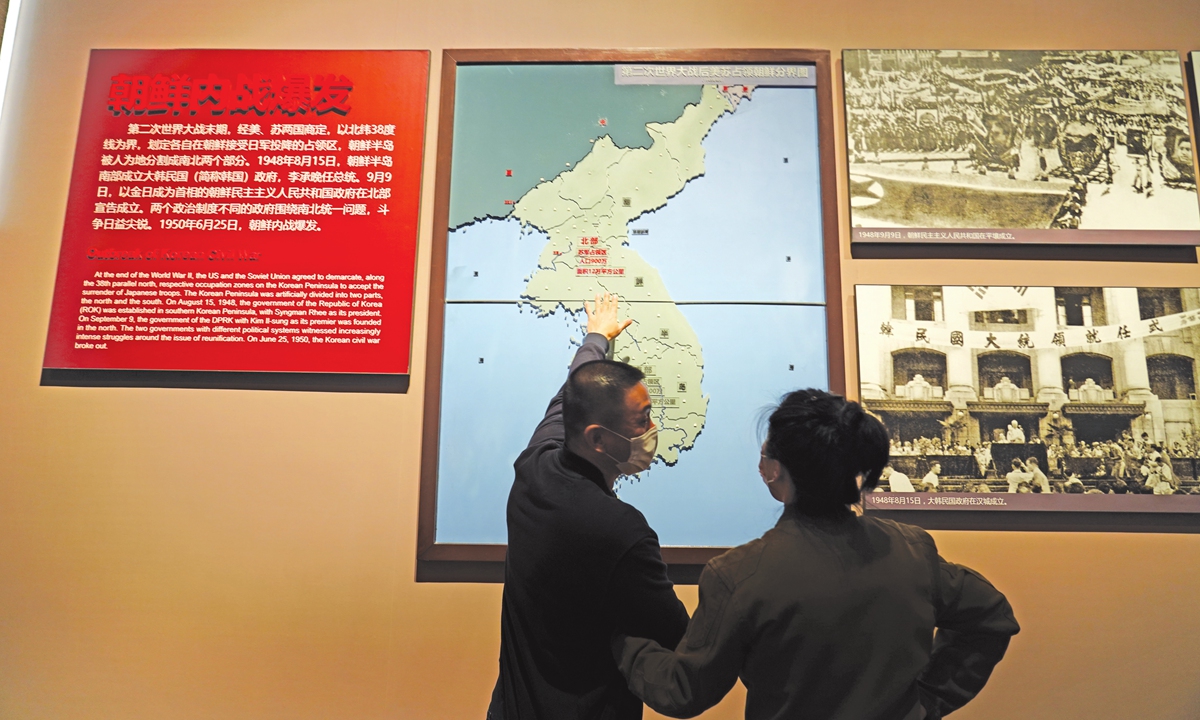
Visitors read a map of Korean Peninsula in the Memorial Hall of the War to Resist US Aggression and Aid Korea in Dandong.
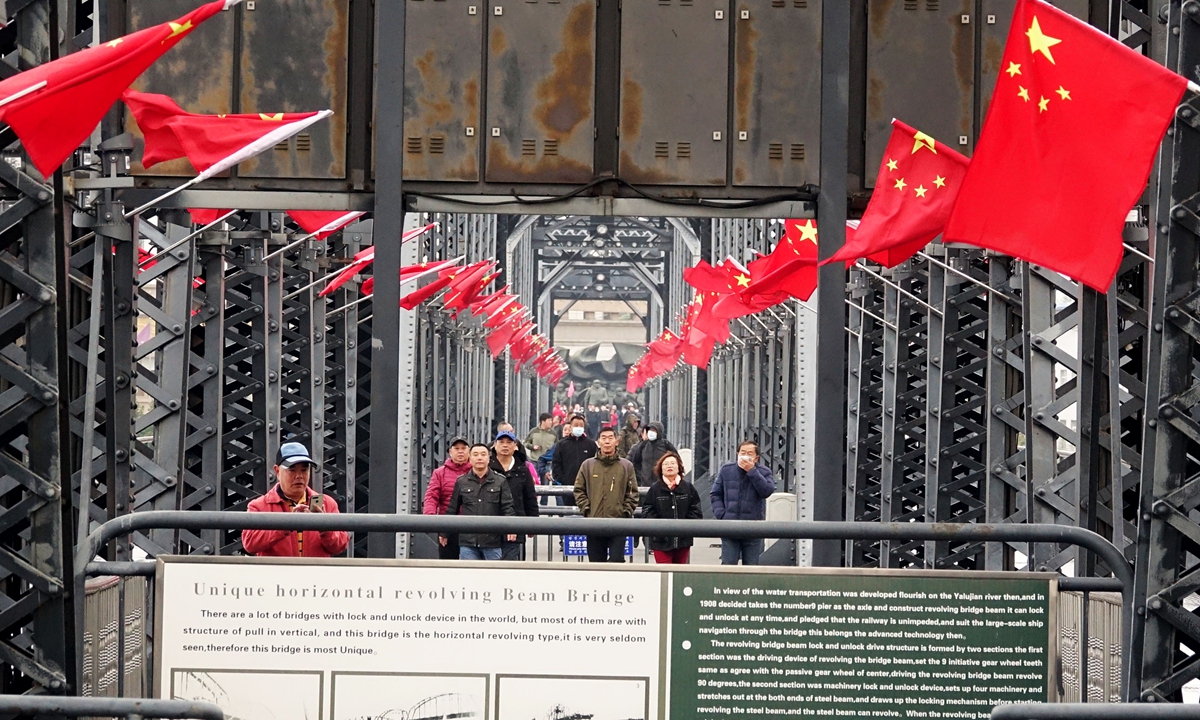
The Yalu River Bridge Photo: cnsphoto
Newspaper headline: Hero city